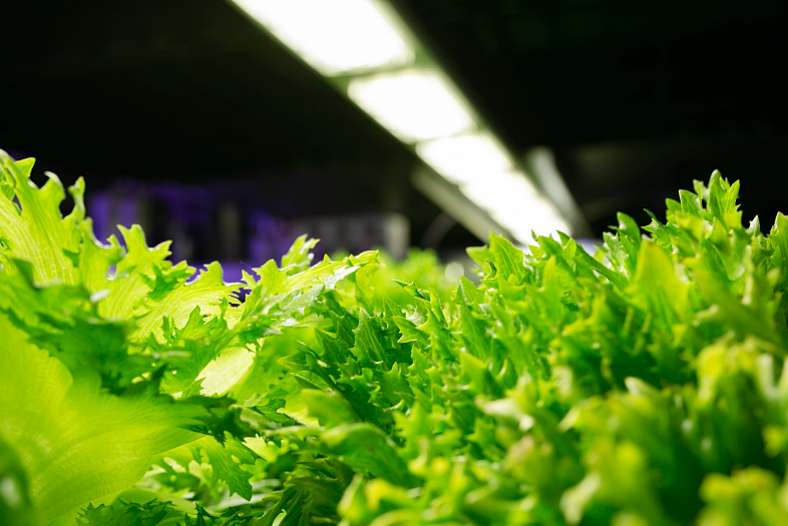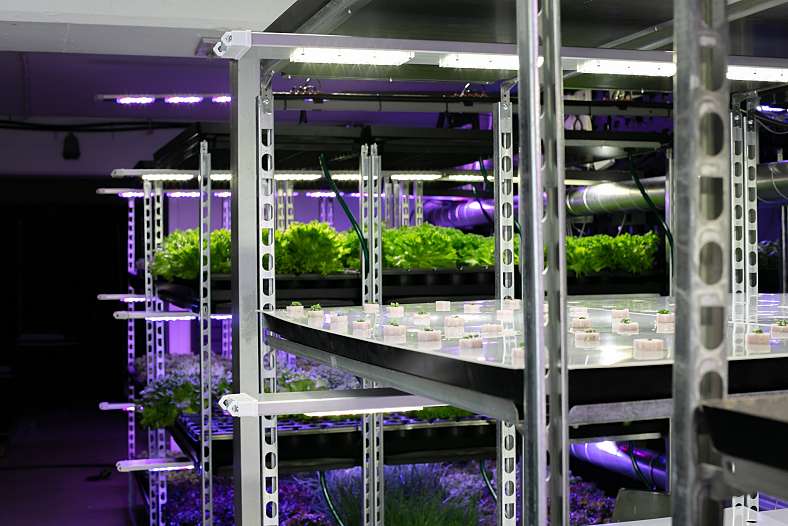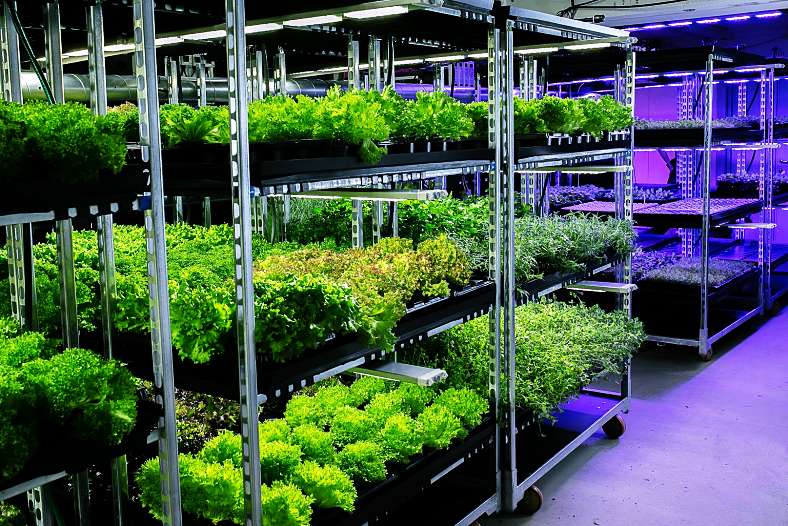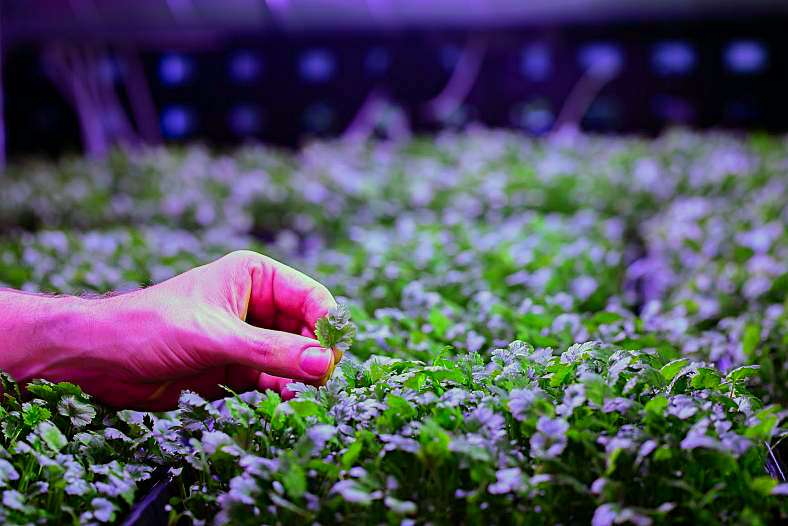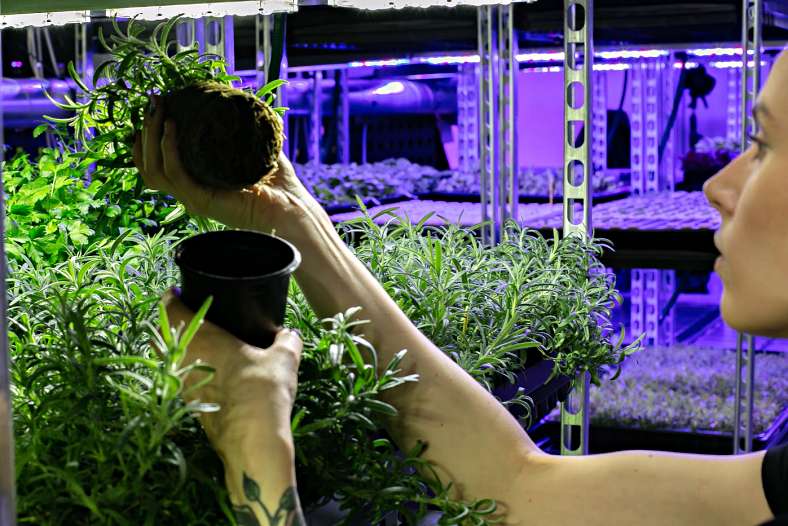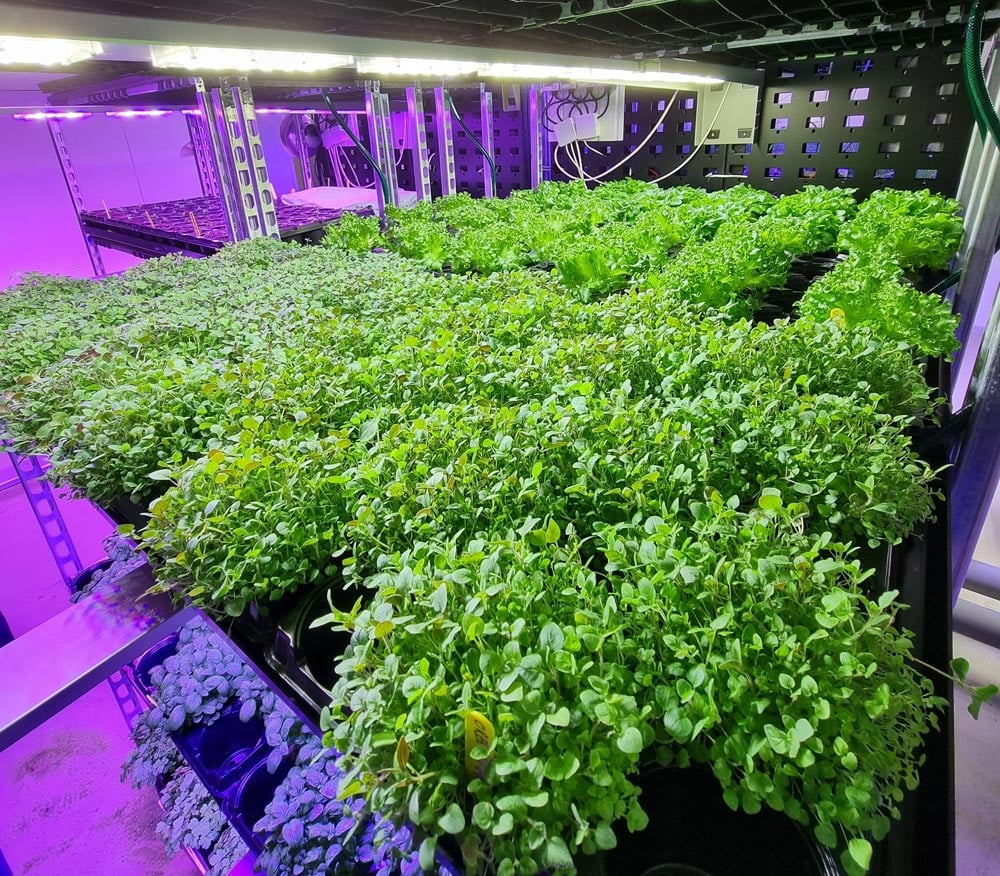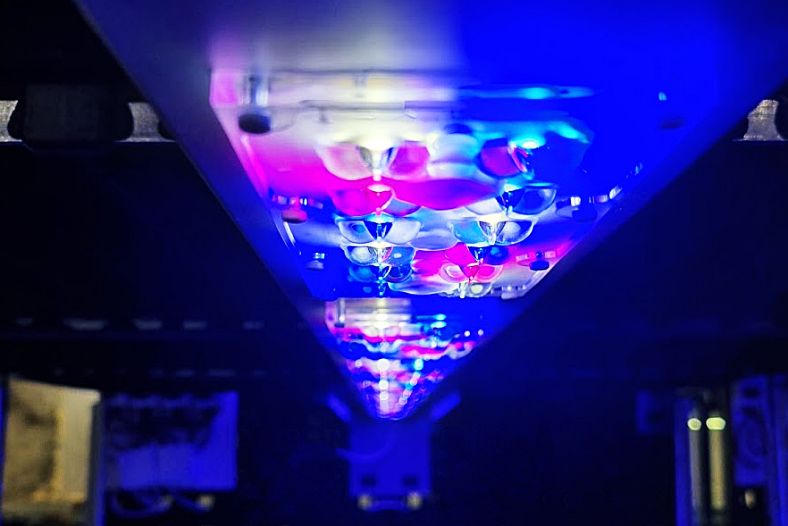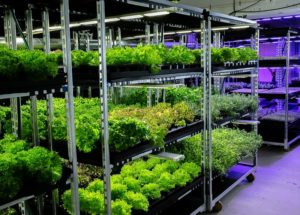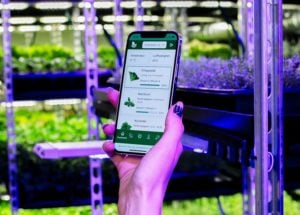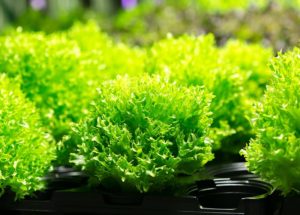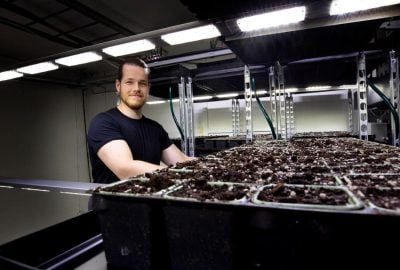What is the difference between vertical and traditional farming? Pretty much everything differs in the day-to-day running of these two farming methods. What may come as a surprise, though, is that they don’t pose much threat to each other. Here is why we need both v-farming and horizontal farming.
Overpopulation. Environmental breakdown. Food shortage. We all know it. Our future looks bleak if we don’t change our way of life. Vertical farming is no miracle cure, but it lends a much needed helping hand to our future generations.
Vertical farming is by no means capable of capsizing traditional farming, nor should it be considered an opponent. V-farming is a perfect addition to horizontal farming. Cooperation between the two forms of food production is a step towards recovery.
What are the advantages of vertical farming?
Vertical farming is outstanding in some capacities which should be taken advantage of. It is an opportunity to raise the standard of certain foods, including the level of production sustainability.
Vertical farming plant growth causes less emission of greenhouse gasses and little to no water pollution. V-farming has also proven to improve the air quality in big city areas, and it rarely uses any kinds of chemicals or pesticides.
In short, vertical farming offers a sustainable method of growing a wide range of plants. It can even be very profitable and greatly aid local food production, but it requires know-how, investment capital, and guts to get started.
Related article: Vertical farm plants: What can you grow?
What are the disadvantages of traditional farming?
Traditional farming has kept us alive for thousands of years and will continue to do so for generations to come. The old farming traditions are still needed, but we can’t expand our farmlands anymore.
Our natural resources will be spent, and our arable land destroyed if we don’t lessen the global burden of horizontal farming. Hundreds of years of land exploitation have pushed our planet to the limit. But we have the means to change our ways.
Vertical farming offers a solution, not to all our problems but to lessen the burden of traditional farming while still making a good profit. It might be hard to believe, but a new and sustainable cornerstone of food production will soon be placed.
Vertical farming is here to stay!
We’ll enjoy better-tasting and more nutritious plant growth in the not-so-distant future. These plants will be cultivated in huge indoor plant factories. Automated growth systems, controlled by machine learning computer programs will feed our future generations.
We already have the technology to automatically produce massive amounts of plants with a drastically reduced workforce. Plant scientists are ironing out the kinks as we speak, which you can read more about in our article about vertical farming research.
Meanwhile, we’ll get back on topic and dig deeper into the question of what the difference between vertical farming and traditional farming is?
Contents
- What is the difference between vertical and horizontal farming?
- Vertical farming systems LED to better plant growth
- V-farming for a better future

What is the difference between vertical and horizontal farming?
As the name implies, vertical farming is plant growth in vertically stacked layers, while horizontal farming is performed on a single, level plane. Vertical farming is typically performed indoors with the help of high-tech tools. Horizontal farming is, for the most part, done outdoors, making use of natural growth conditions.
Simply put, the only thing v-farming and traditional farming have in common is that they are methods for plant growth. Everything else is different, from daily chores, resource consumption, and placement, to transport and income generation.
A tad more specifically, vertical farming is best described as detail-oriented plant growth in very controlled environments. Traditional farming, on the other hand, is based on age-old farming methods, which have been modified in line with modern plant science.
Both v-farming and horizontal farming has certain advantages and disadvantages. None of them can sustain our future generations by themselves, so we need them both. Together, vertical farming and traditional farming might just change our food production for the better.
Different use of space and arable land in vertical and traditional farming
One of the biggest advantages of vertical farming is that it can be performed anywhere. V-farming is specifically designed to produce large amounts of plant growth in minimal spaces, and it doesn’t require arable land.
Traditional farming cannot be conducted without large amounts of arable land, posing a huge environmental problem. It’s possible to transform horizontal farming into regenerative agriculture, but far too few farmers do this worldwide.
In 2018, IPBES (Intergovernmental Science-Policy Platform on Biodiversity and Ecosystem Services) reported that 75 percent of all land on earth was damaged by human interference.
As a result of continuous farming and fertilizing, colossal landmasses have hardened all over the planet. This, in turn, causes slower irrigation and speeds up land erosion by as much as 100 times faster than the regeneration of new soil.
To feed the future 9,7 billion citizens without totally exhausting our planet, we need to change our farming ways worldwide. By 2050, there will be 2,3 billion more mouths to feed, and we don’t have the means to do so.
There simply isn’t enough arable land on the planet to produce the fodder needed for the burger cattle of our future citizens. Future generations will surely get by on a much more plant-based diet, which is why vertical farms will make it big.
As mentioned, vertical farming is not the solution to all our problems. We still need to address a wide range of troubling issues in both traditional and vertical farming. Read more about these issues in our article about vertical farming’s biggest challenges.
In this context, we’ll focus on how vertical farming differs from traditional farming, and so far, we’ve learned that v-farming does not contribute to the degradation of arable land. Next, let’s take a look at the water and power consumption.
Different use of water and power in vertical and traditional farming
A rapport from NASA informed that the global freshwater reserves are depleting much faster than they replenish. We also know that traditional farming is responsible for 92 percent of all freshwater consumption on earth.
Bringing the expected population growth into the equation, by 2050, we can expect a 55 percent increased freshwater demand. In other words, there is no way our water reserves will hold up.
As for vertical farming, its water consumption is 70-95 percent lower than traditional farming. How is that possible? For one, vertical farming is designed to reuse most of its water, and secondly, the irrigation systems are much more effective.
Water pollution from vertical farming is practically nonexistent. But power consumption is another matter which concerns many.
The power problem in vertical farming
Thanks to new LED technology, vertical farming power consumption has been drastically reduced over the last couple of years. Still, the energy surge in v-farming is sky-high compared to horizontal farming.
Power consumption is the sole reason why vertical farming is not wholly sustainable. There is no way around it; the vertical farming system demands copious amounts of grow lights. These lights need power.
For this reason, vertical farming still contributes to greenhouse gas emissions. This is because the power often comes from thermal power plants, which often are oil- or coal-fired.
Scientists around the world are working hard to solve the energy issue in vertical farming. If they can make the lamps more cost-effective, it will be easier to turn a profit in v-farming, but will it make indoor plant growth entirely sustainable?
It probably requires some creative solutions to make vertical farming truly sustainable. Some have voiced their belief in better solar panel technology. Others have suggested v-farming with transparent roofs to let in natural light.
Related article: How to reduce vertical farming energy consumption?
Time will tell how we make vertical farming completely sustainable. All we know for sure is that LED technology is improving every year that goes by.
We also know that v-farming combats environmental breakdown in many other ways. The question is if these sustainable solutions outweigh the power consumption issue?
Let’s look at a few more ways that vertical farming is better for the environment than traditional farming.

Different use of resources and transport in vertical and traditional farming
Since we ended the last chapter on a somewhat disconcerting note, let’s get back at it with some good news: Aside from water and power, there is little need for any other resources in vertical farming.
You’ll need a growth medium, like Rockwool, Growfoam, or peat, but compared to traditional farming, fertilizing is minimal. Not only that, v-farming fertilizers tend to be a lot more environmentally friendly.
Chemicals or pesticides are only used on rare occasions and only when particular problems occur. On regular days, no chemicals or pesticides are ever used.
Moreover, the vertical farming business model is based on locating production close to the customers. This results in drastically reduced shipping costs and considerably less pollution from food transport.
To be honest, the emissions from food transport are much lower than emissions from v-farming’s power surge. This is why vertical farms still contribute to larger emissions of greenhouse gases than traditional farms.
The environmental equation will change for the better in the future. For now, however, we need to ask ourselves if minimal water spillage, no degradation of land, and less food transport outweigh high power consumption?
It’s a difficult question for sure. If you’re considering the startup of a vertical farm, these matters will affect your business’ sustainability, marketability, and profitability.
Different income generation in vertical and traditional farming
Vertical farming skeptics argue that power consumption makes it a less than desirable business prospect. The fact is that many companies have already turned v-farming into big business.
Vertical farming has a huge advantage in its automation possibilities. Sensors and computer systems allow enormous plant production with very little staff.
Another popular argument in the skeptics’ camp is that the startup costs are too high. Well, we might have to give them that one. Once the vertical farm is set up, and the plant growth is optimized, the cost never comes close to traditional farming.
Not only that, but vertical farming makes it much easier to predict and plant both crop results and income. This makes it much easier to re-invest your earnings wisely, expand the business, and increase profits.
Do like Microsoft and Google, invest in vertical farming!
It’s not without reason that Microsoft invests in vertical farming technology or Jeff Bezos (founder of Amazon.com) spends time on v-farming. For that same reason, Walmart went into business with one of America’s biggest vertical plant factories.
They all believe that vertical farming will be an integral part of our food industry.
At the moment, the size of your vertical farm affects your success. Large production quantities make it a lot easier to turn a profit. Even medium-sized v-farms can make a decent profit if they market their products well.
In this respect, it’s excellent news that vertical farming is getting more trendy by the day. Brand building and product marketing are crucial. If done right, it allows vertical farms to set their prices higher and ensure profitability even for smaller operations.
Once the final pieces are in place, vertical farming will be unstoppable. When the startup cost is brought down, and the energy consumption is lowered, v-farm produce will be the best the world has ever seen.
Not only will vertical farm plants be wholly sustainable and pesticide-free, but they will also be more nutritious, better tasting, and appetizing like nothing the consumers ever saw. How can that be? It’s all thanks to those power-hungry LED lamps.
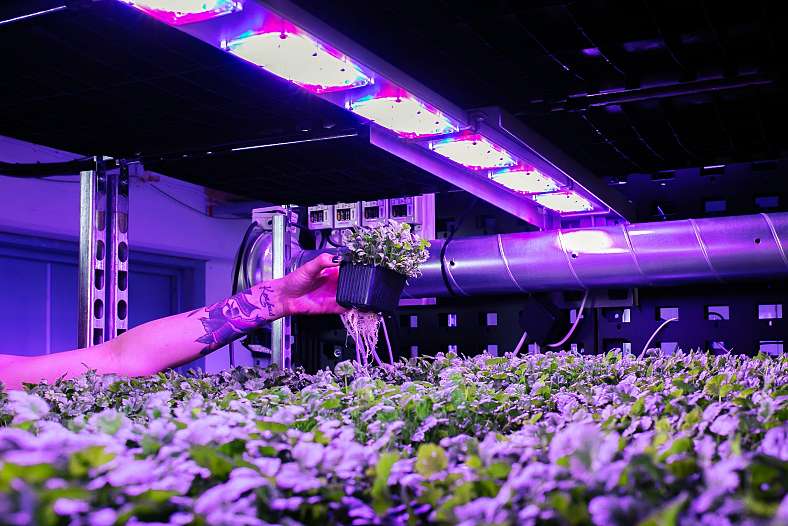
Vertical farming systems LED to better plant growth
LED causes the biggest problem in vertical farming, but it also ensures superior plant growth. Light frequencies can be adjusted to make tastier and more nutritious plants by using digital surveillance and computerized LED control.
The light control in vertical farming systems is crucial since it optimizes plant growth well beyond the capability of traditional farming. For instance, by adjusting the light frequencies, you can make strawberries sweeter or basil leaves more plentiful.
In short, timing is key. In the early phases of plant growth, red light is beneficial since it stimulates sprouting and growth. Blue and white lights are more important in the next growth phase, as it affects taste, nutrition, and appearance to a larger degree.
Large amounts of white light (UV light) make the leaves thicker but reduce the nutrient levels. It is all about balance, and once you get a handle on it, your plant growth can compete with the best vegetables on the market.
Check out our article about why LED grow lights are best for vertical farming to find out more.
Vertical farming has yet to get a worldwide foothold, but it is becoming an integral part of the food industry in Asia and America. The same will happen around the globe as soon production costs are lowered and sales networks are established.
Consumers get more health-conscious and environmentally engaged every day that goes by. At the same time, we demand fresher, tastier, and better-looking food. Vertical farming provides all these things, which is why it is an inevitable part of our future food production.
V-farming for a better future
Vertical farms never set out to drive traditional farms out of business. We still have a long way before v-farming makes big profits on anything other than salads, herbs, and berries.
We will probably always need traditional farming to make grains, rice, potatoes, and animal fodder. However, land exploitation needs to end. The expansion of traditional farming can not continue. Our methods need to change before it’s too late.
As for vertical farms, they will get by just fine, for now, making salads, herbs, and berries. People eat more greens now than ever, and the market is more than big enough to sustain the current v-farming community.
And since vertical farming can be performed in very tight spaces, it can easily be installed and executed in combination with other kinds of agriculture. It won’t slow down traditional farmers but instead provide an extra source of income.
There is no way around the coming population explosion and no need for vertical and traditional farming to compete. The mouths to feed will consume all they can produce and probably then some.
We need to be team players to survive. Traditional farmers might see vertical farming as a threat when it offers a solution to some serious concerns about our future food production.
When LED technology catches up with our ambitions and the energy issue in vertical farming is solved, we’ll get a wholly sustainable means of food production. If, at the same time, we manage to implement green growth strategies in traditional farming, we might just stand a chance.
Together, vertical farming and traditional farming might stop planet deterioration, feed future generations, and make good profits in the process. It demands some serious changes, though, and they ought to start sooner rather than later.
Related article: How vertical farming reduces environmental impact
Conclusion
Vertical farming will undoubtedly play a part in our future food production, but it won’t carry the burden alone. Traditional farming and v-farming are very different, but they are also compatible.
Vertical farming is designed to support traditional farming, just like it’s meant to help our future generations and the planet they inhabit.
Together, vertical farming and traditional farming might stop planet deterioration, feed future generations, and make good profits in the process. Hopefully, we can succeed in achieving these goals and hope for a better future for us all.
Related article: Vertical farming or greenhouse farming?
Resources
AEM: Vertical farming: How plant factories stack up against field agriculture
Goodnet: Vertical Farming is a Sustainable Alternative to Conventional Agriculture
IPBES: The Assessment Report on Land Degradation and Restoration
IPBES: Media Release: Worsening Worldwide Land Degradation Now ‘Critical’
MDPI: State of the Art of Urban Smart Vertical Farming Automation System: Advanced Topologies, Issues, and Recommendations
Microsoft Features: Indoor vertical farming in Asia and beyond: Digging deep in data
U.S. Department of Agriculture: Vertical Farming for the Future




